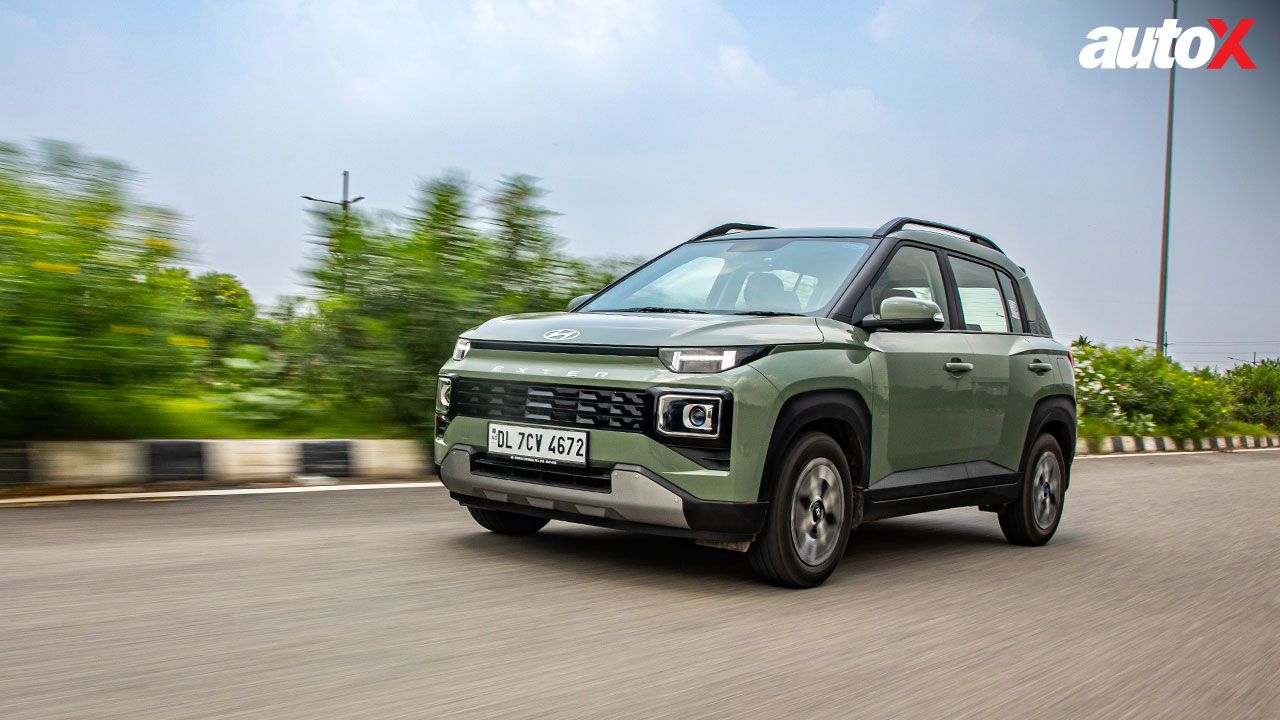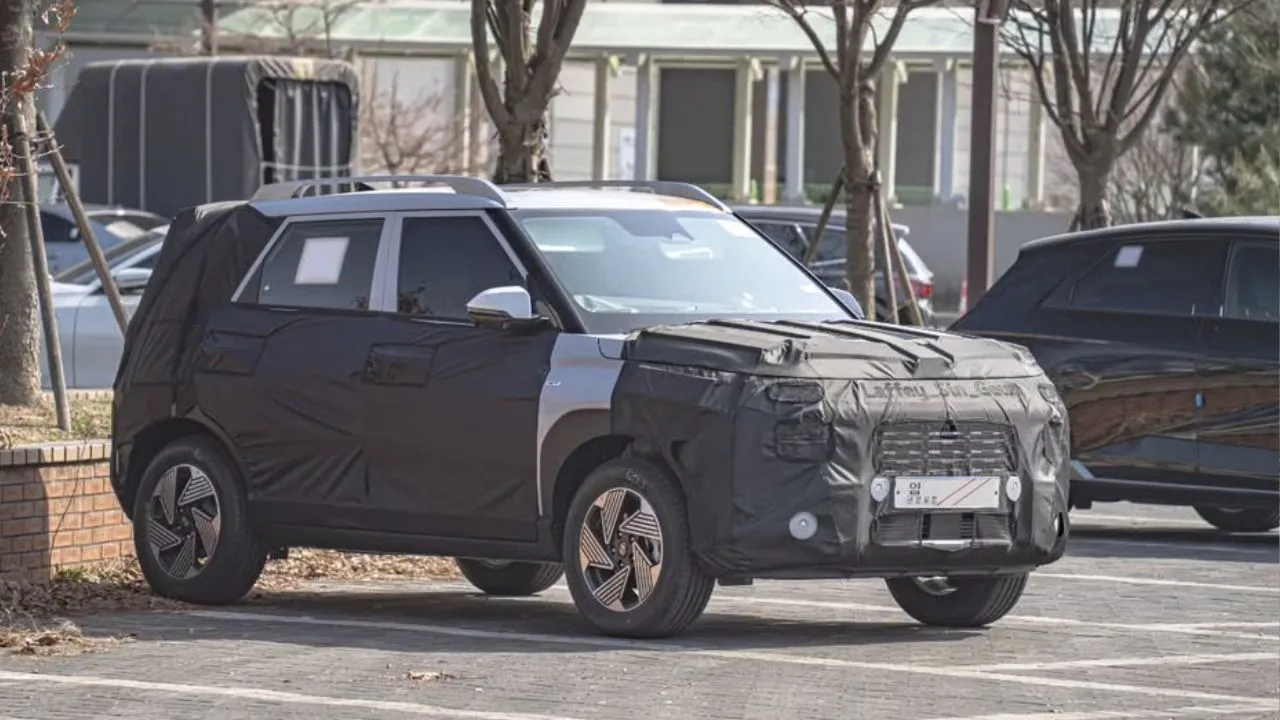Hyundai Venue vs Mahindra XUV300 vs Tata Nexon vs Maruti Suzuki Vitara Brezza: Comparison
The Hyundai Venue is the latest entrant in the hot sub-4m SUV space. So, yet again, we pit the Maruti Suzuki Brezza, Tata Nexon, and Mahindra XUV300 with the latest contender from the Korean brand.

Sure, the Hyundai Venue looks impressive, but can it really shake up the fiercely competitive compact SUV segment?
I’m assuming you just read through my first drive impressions of the Hyundai Venue on the previous few pages. That being the case, you’ll know that it has all the makings of another Hyundai blockbuster. But the question we’re asking here is, how does it hold up against the competition? So, we’ve assembled the ranks to bring you a thoroughly comprehensive comparison report.
There is one small problem though. You see, we did a similar compact crossover comparo a few months ago – they continue to sell like hot cakes after all – and the Ford Ecosport prevailed in that test. But, in this instance, Ford was unable (or unwilling?) to provide us with an Ecosport – so we’ll just have to do without it.
Snazzy, at first glance
It’s impossible not to notice that the Hyundai Venue truly looks more modern than all of its rivals right from the first glance. With its squarish bumper-mounted projector headlamps and surrounding DRLs, to the massive hexagonal grill, snazzy alloy wheels and that unmistakeable Hyundai Creta-like silhouette, this is a car that you simply can’t overlook on the road.
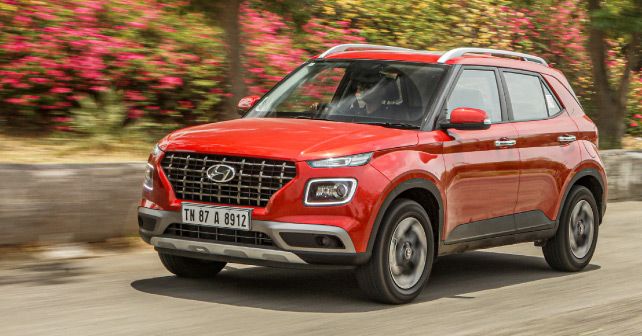
And that’s really a good thing, for design is critical in this segment – perhaps more so than others because it’s such an aspirational (and crowded) segment. Owners want their car to look butch and intimidating on the road, but also unique and modern at the same time – a fine line to walk for the designers. As a result, all the manufacturers have now begun to offer their compact SUVs with dual-tone paint schemes, and even various customisation options.
Now, building an SUV within limited constraints – such as the length limitation to fit within the four-metre length limit – is bound to have a side effect somewhere, but we’ll get to that later. The point here, though, is that customers are willing to live with these limitations as long as the product makes a real style statement.
Just look at the XUV300, for instance – its headlights expand outwards, creating a teardrop-like design that flows into the bumper to form a fog lamp housing. It’s also got a chrome studded front grill and flared wheel arches, which rise to form a strong belt line for the car.
Speaking of flared wheel arches, the Tata Nexon too has very nicely rounded wheel arches and wheel wells – making it look like a real SUV. The Nexon sits on wide wheels and has a high ride height. It also has a thick white band that stretches around the beltline of the car, which adds yet another distinctive design aspect to the car. Plus, the sloping roofline looks pretty unique too.
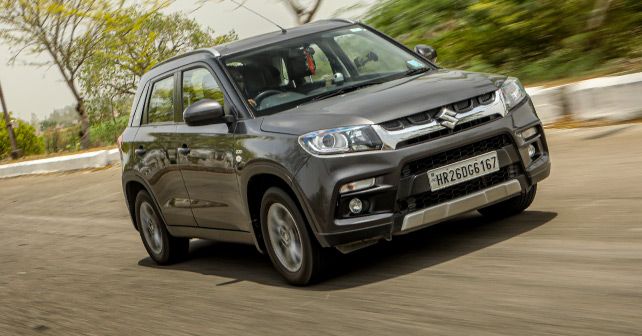
The Brezza, which is the oldest car here, has the most sedate design of the lot. But it’s got a squarish design theme, which gives it a nice boxy SUV-like profile. And, in one of the brighter colours with a dual tone paint theme, it looks no less attractive and charismatic than the other cars on this list.
Designed to be driven
But let’s face facts, the Brezza has begun to show its age – and not just on the design front either. Step into the rear seat, and the limited legroom is quite evident. At only 23 centimetres, the legroom is really limited – it’s not uncommon to have your shins jammed against the bottom of the front backrest as you gasp for more legroom and under-thigh support. Unfortunately, things don’t get much better for rear seat occupants, as the Brezza also has a really stiff suspension setup, which makes the ride quite bumpy for back seat passengers.
The Brezza’s redeeming quality, however, is immediately evident once you position yourself in the driver’s seat of this car! The seat itself has been brilliantly positioned, offering you a great view of the road ahead. All controls are easily accessible, making you feel that you’re always in full control of the machine. And from the moment you set off, you know that you’re in the best seat in the house.
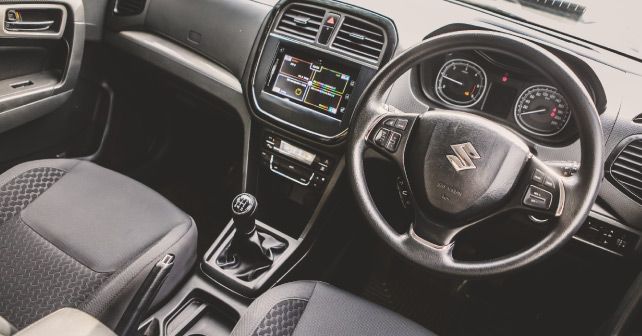
The sole engine option here is (the soon-to-be-discontinued) 1.3-litre diesel engine, and the model that we tested had a five-speed manual. When you fire up the oil burner, you’re greeted by a fair amount of diesel engine clatter. And the clutch and gear lever are relatively heavy to operate too. But once you get going, all this is soon forgotten.
Turbo lag is pronounced till about 1,800rpm, but beyond that, the engine revs freely – the boost stays strong all the way to the 5,000rpm mark. In fact, this is the only engine on our list that loves to rev this high. Combine this with the crisp release point of the clutch and short throws of the gear lever, and the Brezza absolutely loves to be driven hard. Factor in the firm suspension setup, which limits body roll very well and ensures that this car stays planted at all times, and what you have is quite a corner carver in the Brezza – it simply loves to be pushed to its limits all the time. So, when you’re enjoying yourself in the driver’s seat you won’t really complain about the high NVH. And, as for that stiff ride, let those at the back worry about it!
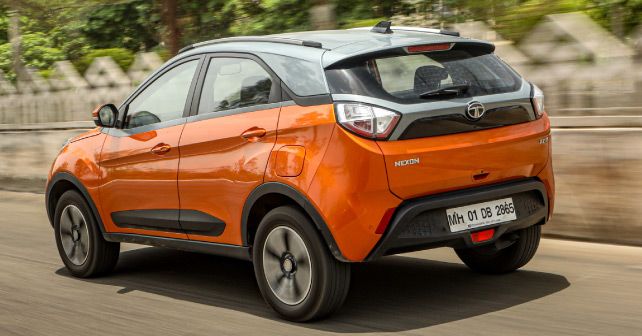
Mr Well Balanced
Now, it’s tough to match the Brezza’s raw driving appeal, there’s no doubt about that! So, the Nexon counters it with a more balanced approach, which means that it remains fun to drive but also offers lighter controls and far lower NVH. In fact, as soon as you press the ignition button in this car after stepping out of the Brezza, you immediately notice the absence of that diesel engine clatter. It really is quite impressive.
The clutch pedal is also far lighter than the Brezza. And once the car gets rolling, you can’t help but notice just how linear the power delivery is in conjunction with light throttle inputs. The gear lever is light in operation too, and so it the steering.

Overall, the Nexon is much easier to drive. Driving it faster makes the turbocharger’s boost come into play at about 1,700rpm. On paper, however, it’s supposed to spool fully at 1,500rpm where a healthy 260Nm of peak torque is made. It’s the mid-range of this Tata engine that’s the real treat though, as that’s when you can fully exploit all of that 108bhp. Approaching the redline is an effort, and in vain, so it’s better to just stick to the mid-range and not bother with revving out this engine. On a side note, you do feel a strange vibration through the steering wheel between 2,700 to 3,300rpm – something that’s plagued this car since its launch.

The Nexon’s wide stance is quite useful around high-speed bends – the car simply loves to hug the road and it offers plenty of grip with limited body roll. The only fly in the ointment here is the steering, which, at higher speeds, feels wooden and has little to offer in terms of feedback.
Speaking of downsides, the clutch pedal has a lot of travel, with a springy release point, and the throws of the gear lever are so long that a quick gear change for sporty driving is near impossible.
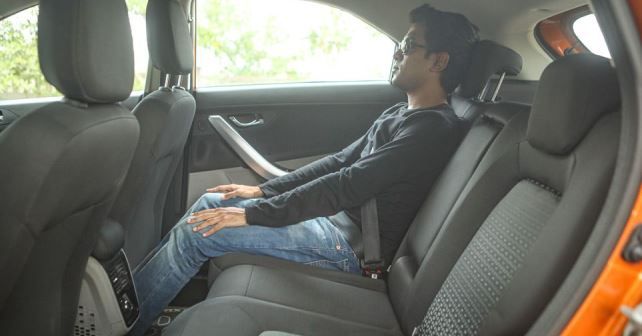
The Nexon, however, shines bright in terms of in-cabin comfort though – it offers a very plush ride and has the most spacious cabin amongst all the cars here. Don’t let the 22 centimetres of rear seat legroom fool you, because the seat cushion is long enough to provide you with plenty of under-thigh support. So, despite its limited on-paper legroom, there’s plenty of knee room for rear seat passengers, and you can comfortably tuck your feet under the front seats for a near-perfect rear seat experience.

Gym rat on steroids
The Mahindra XUV300, on paper, has the longest wheelbase here – and, at 29 centimetres, it also has the most rear seat legroom. But when it comes to rear seat comfort, the story is quite different – the short bench provides little under-thigh support and the floor sinks down at the base of the front seat hinges. As a result, when you try to tuck your feet under the seats your ankles are higher than the rest of your foot, making your toes point upwards and come in contact with the underneath of the front seats – making it very difficult to find a comfortable position. So, you have no choice but to pull your feet out and assume a knees-up seating posture with no under-thigh support.
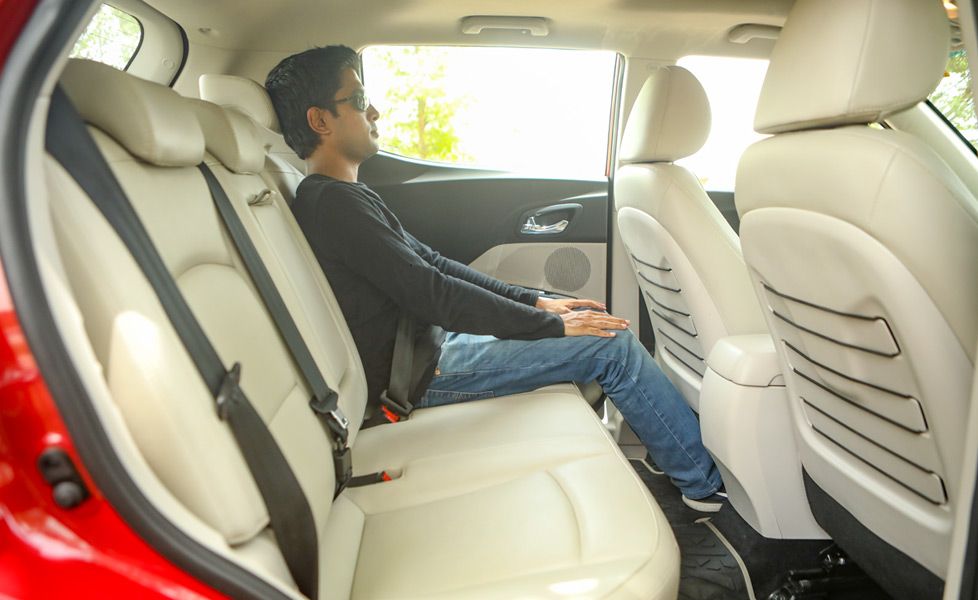
The XUV300’s rear seat, then, isn’t ideal for adults on long journeys. But, like the Brezza, this is a vehicle best enjoyed from the driver’s seat. It’s no secret that the XUV300 is the most powerful car in its class, with 115bhp and 300Nm of torque. But this car is really all about its turbocharger, as there’s simply no way you can prepare yourself for the all-out assault from the turbo the moment you hit the 1,500rpm marker.
The XUV takes off in a manner that’s simply not in the same league as that of the other cars here. Make no mistake, it’s a fast car on all accounts. So long as you keep the engine in its prime operating range, which is 1,500 to 3,500rpm, the other cars here are going to have a tough time keeping up with it. But its narrow powerband, combined with a light and springy clutch and long throw gearbox, with a notchy operation, acts as a deterrent to its performance-oriented nature.

Unfortunately, the steering wheel feels either a little too light or a little too heavy depending on what steering mode you’re using – yes, it has more than one steering mode. But irrespective of the mode, steering feedback doesn’t inspire confidence. Then, there’s also the matter of body roll, which is quite pronounced around high-speed bends. Let’s just say that the driving experience here is all about the power – just a little bit of that finesse is lacking at present.
The all-rounder
Now, if its finesse you’re after, you need only look at the Hyundai Venue. From the moment you shut the door after entering the vehicle, the Venue feels like a rather polished offering. After all, it’s no secret that Hyundai puts a lot of effort into making their products feel very refined and sophisticated in terms of operation, design, quality and fit-and-finish. These are some of the reasons that have made it such a success in India.
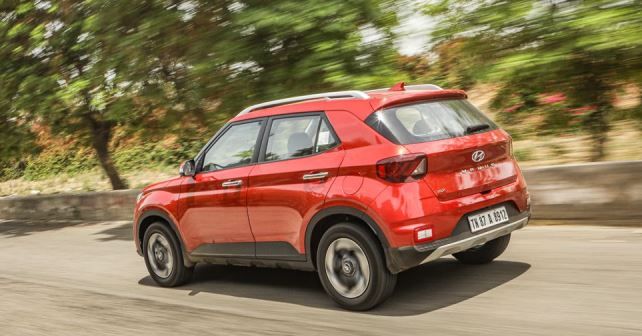
Like other Hyundai cars, the Venue benefits from all this. As I’ve mentioned before, it looks brilliant. And its interior isn’t disappointing either – it’s all-black with a high build quality and upmarket switchgear. The only aspect that sticks out like a sore thumb is the use of plain plastics on the door pads, which lack design and look pretty bland.
That aside, it’s hard to fault this cabin. There’s decent in-cabin space, even though it only has 23 centimetres of rear legroom (identical to that of the Brezza). But, in this case, because of the high seat, your legs reach deeper into the footwell and find decent under-thigh support and legroom. The only grouch is the intruding C-pillar that eats into the headroom for taller passengers.
Jump into the front seats, and there’s nothing to worry about in terms of space though. Now, the Venue on-paper has the least powerful engine here. And this is something that’s evident up to 1,800rpm, at which point the turbo lag is overcome. The engine does have a nice and wide powerband beyond this though, so you can continue to push it past 4,000rpm.
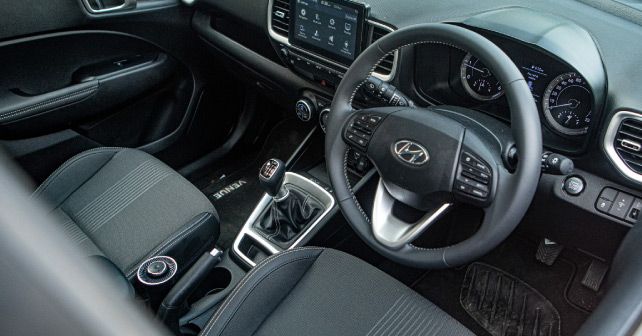
The performance is adequate on the road, but it’s the light clutch pedal with its short travel, along with a short throw gearbox that has a crisp operation, that makes the Venue diesel quite a bit of fun to drive. The boost from the turbo is always there when you need it, and you’re always only a quick gear change away from keeping this engine in its prime operating range. This playful nature of the refined and quiet powertrain is very well complimented by the well-balanced chassis, which allows you to carry a fair bit of speed around highway bends with great body control and well-contained body roll.
I’d like to think of the Venue as a fun-to-drive compact car that’s well suited to both urban and highway use. Its suspension, however, can feel a tad on the stiffer side over sharp bumps – something that could unsettle rear seat occupants over bad roads.
A new champion
In truth, though, it’s really tough to fault with the Venue – it offers a relatively spacious cabin, loads of features, a decent set of powertrain options, looks good and is nice to drive too. It’s a car with pizzazz, which gives it an edge over the other cars here not just because it looks great but also because it’s the most well put together package here on every parameter. Plus, it also offers a host of new-age connectivity features. Sure, purely from a driving enjoyment perspective it’s rivals are still within striking distance – especially the Ford Ecosport – but on the whole I would have to say that the Hyundai Venue is the new king of the compact SUV segment. It ticks all the right boxes – it makes a real style statement, has tons of road presence, great quality and feels good from behind the wheel too.
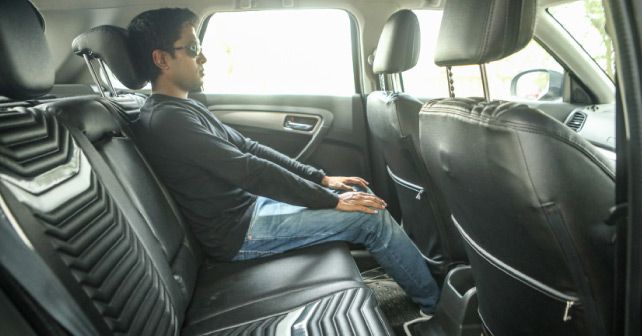
At only 23 centimetres, the legroom is really limited in the Brezza – it’s not uncommon to have your shins jammed against the bottom of the front backrest.
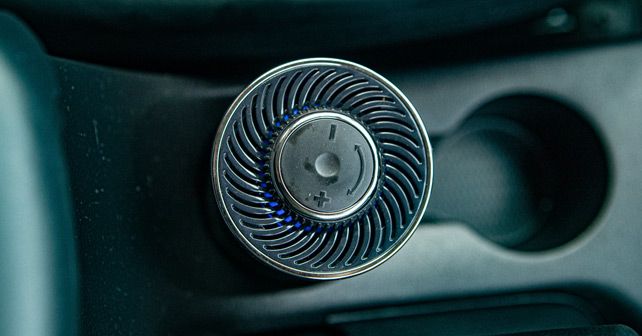
The Hyundai Venue is easily the most well equipped car in its class, with equipment ranging from connectivity features to an air purifier.
Also read - Hyundai Venue Review
Engine: 1,248cc / 4-Cylinders / 16-Valves / Turbocharged
Fuel: Diesel
Transmission: 5-Speed Manual / Front-Wheel Drive
Power: 89bhp @ 4,000rpm
Torque: 200Nm @ 1,750rpm
Price: ₹9.91 lakh (Ex-showroom, Delhi)
X-factor: An uncompromised driver’s car.
| Pros • Performance • Handling | Cons • Short on rear legroom • Firm ride |

